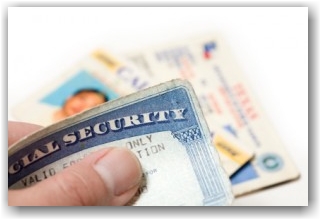Monday, November 11th, 2013

While DHS/ICE continues to issue Notices of Intent to Fine (NOFs) at an unprecedented rate for Form I-9 related infractions, this is yet another reminder that you can choose to pay the fine or you can contest the fine and file for a hearing (within 30 days of receipt of the NOF) before an Administrative Law Judge (ALJ) who handles cases related to employer sanctions, document fraud and unfair immigration-related employment practices. OCAHO has more than proven that they are willing to reassess and lower fees in just about every case in recent months.
Note that many employer sanctions cases never proceed to the hearing stage because either the parties reach a settlement with the approval of the ALJ, or the ALJ resolves a case through a prehearing ruling.
We recommend that your first step in the process be to retain experienced representation that specializes in the practice area of employer compliance to guide you step by step through the process – don’t attempt to go this alone. The next step is to understand the process that has been summarized very efficiently in the recent Fact Sheet that we refer to here
Should you have any questions or wish to become a client of our office, please contact us or refer to our services & solutions page.
Tags: ALJ I-9 Hearing, Department Of Homeland Security (DHS), Document Fraud, DOL, Employer Sanctions, I-9 Fees, I-9 Form, I-9/E-Verify News, ICE Audit, ICE Investigation, Immigration News, IRCA, Legal Workforce, Notice of Intent to Fine, OCAHO, OSC, SSA
Posted in DOJ, Employer Compliance, Federal Contractors, I-9/E-Verify News, ICE, Immigration News, OSC, Social Security | Comments Off on How to Contest an I-9 Notice of Intent to Fine (NOF)
Thursday, March 14th, 2013

A new edition of the I-9 employment eligibility verification form was introduced last week. USCIS has been working on the revised I-9 form for more than a year. The revised M-274 Handbook for Employers can be accessed at the same link. Many areas on the I-9 Central website have also been updated. Note the webinar schedule for the new form.
The new edition of the I-9 Form, dated March 8, 2013, will take effect immediately on publication and will become the only acceptable version of the form. Employers who need to make necessary updates to their business processes to allow for use of the new Form I-9 may continue to use other previously accepted revisions (Rev.02/02/09)N and (Rev. 08/07/09)Y until May 6, 2013. Effective May 7, 2013, all employers must use the revised Form I-9 for each new employee hired in the United States. Employers who are not using the I-9 form following the 60-day grace period will be subject to fines and penalties under 274(a) of The Act (The Immigration and Nationality Act), IRCA, as well as ICE.
The revised Form I-9 has several new features, including new fields and a new format to reduce errors, and more clearly describes the information employees and employers must provide in each section. The instructions to the form are now 7 pages in length, and we recommend that you provide the instructions and the list of documents to your new employees to refer to during the process. The form looks much more official and now displays the DHS seal at the top left of the form with space built in to eventually implement future barcode technology. Helpful new images have been added to the M-274 Handbook to illustrate how employees and employers can complete Sections 1-3 of the new form. Please also see page 23 for updated guidance on recording changes of name and other identity guidance.
In the USCIS Stakeholder conference held on March 11, 2013, many of the questions centered around the following topics that we thought might be helpful to share with you, as follows:
- Do I need to fill out a new I-9 forms for all employees? You do not need to do new I-9 forms for those employees who already have one.
- When to accept receipts: Receipts for initial employment or renewal (during reverification) of employment are not acceptable. There are 3 different documents that qualify as receipts are: (a) Receipts may be presented for sections 2 and 3 if the document was lost, stolen or damaged; the receipt is valid for 90 days. (b) Temporary I-551 (a printable notation on a machine-readable immigrant visa inside a foreign passport). This is a 1-year permanent residency stamp for a foreign national that has received permanent status abroad. The Form I-551 (permanent residency card) must be presented prior to or no later than the expiration stamp inside the passport. (c) An I-94 entry card with an unexpired refugee stamp. This is considered a receipt for an Employment Authorization Document (EAD card), or a combination of an unrestricted Social Security Card and a List B document and is valid for 90 days.
- Rehires and Reverifications: If you are rehiring an employee who completed an I-9 form within 3 years, you can continue to use the existing I-9 form, and record any name changes, the rehire date and other required information in Section 3 and change the date of hire in Section 2 (initial/date). If their work authorization as changed you can make the correction on the existing form if still valid or generate a new form I-9 and fill in Section 3 and attach to the old form. As a reminder, do not reverify US citizens, permanent residents, conditional residents, asylees with unrestricted work authorization and List B identity documents such as driver’s licenses and state ID cards.
- The use of notaries: Notaries are “designated agents” of the employer. They should not imprint their notary stamp on any I-9 documentation or attach same to the I-9 form. The employer is responsible for their actions and any violations relating to Form I-9. Photocopies of I-9 forms are also not acceptable from Notaries. A notary or any other designated agent appointed by the employer must examine the original documents presented to them and thoroughly complete and sign section 2 of the form and return the original to the employer, along with photocopies of the presented documents should this be a company policy.
- Recording social security numbers: On the List of Acceptable Documents for List C, Social Security card restrictions are explained to better assist in examination of the document. Note that individuals with temporary work authorization are issued restricted social security cards that indicate: “Not valid without USCIS/DHS work authorization
- Recording the date of hire in Section 2: When an offer of employment is extended and accepted but the employee has not yet started, the I-9 may be completed using that date instead of the ‘actual’ start date of employment. You may then go back into the form and adjust the date to the actual start date (the 1st day of work for pay). Recruiters or recruiters for a fee are not required to enter the employee’s first day of employment. However, you may enter the first day the employee was placed in a job pool after an offer of employment and acceptance.
- Must employee present documents that correspond to box checked in Section 1? No, employers may not insist on viewing any particular documents. However, if information is recorded in section 1 that puts the employer “on notice” that work authorization may be expiring, you are required to track that date and follow-up with the employee concerning their continued work authorization.
USCIS has indicated that a good place to begin implementing the use of the new I-9 form is to take time to first thoroughly read and digest the revised M-274 Handbook for Employers. Download it from the USCIS website and provide a complete copy to each and every employee charged with processing and managing the I-9 function at your place of employment to ensure that they are aware of the changes and are equipped to properly implement them. Update your company policies to reflect the changes in the form.
For those of you who manage your I-9 forms via an electronic software vendor, this is absolutely the right time to have a conversation with them concerning their compliance with the new form and make sure that it complies with all pertinent rules and regulations for I-9 electronic software . This is also an excellent time to think about additional training for your staff. Refer here for our services and solutions.
To order copies of the new I-9 form from USCIS, you can call 1-800-870-3676.
Tags: Changes to new I-9 Form, Department Of Homeland Security (DHS), Department Of Labor (DOL), Employer Sanctions, Employment Eligibility Verification, Handbook for Employers, I-9 AUDIT, I-9 Form Penalties, I-9 Training, I-9/E-Verify News, ICE, Immigration News, Legal Workforce, M-274, New I-9 Form, Social Security, USCIS
Posted in Department Of Homeland Security (DHS), Department Of Labor (DOL), Employer Compliance, I-9/E-Verify News, ICE, Immigration Legislation, Immigration News, Social Security, Staffing Agencies, USCIS | Comments Off on New I-9 Form Update from Immigration Compliance Group


